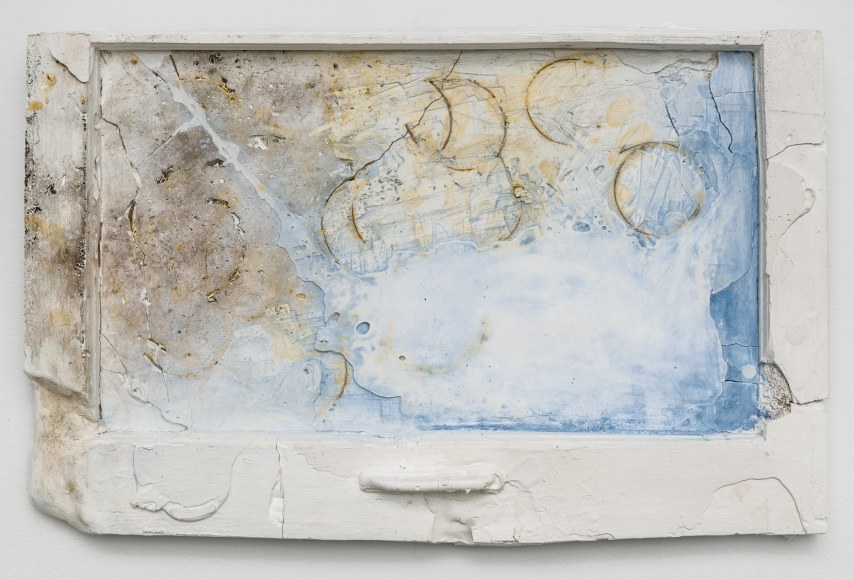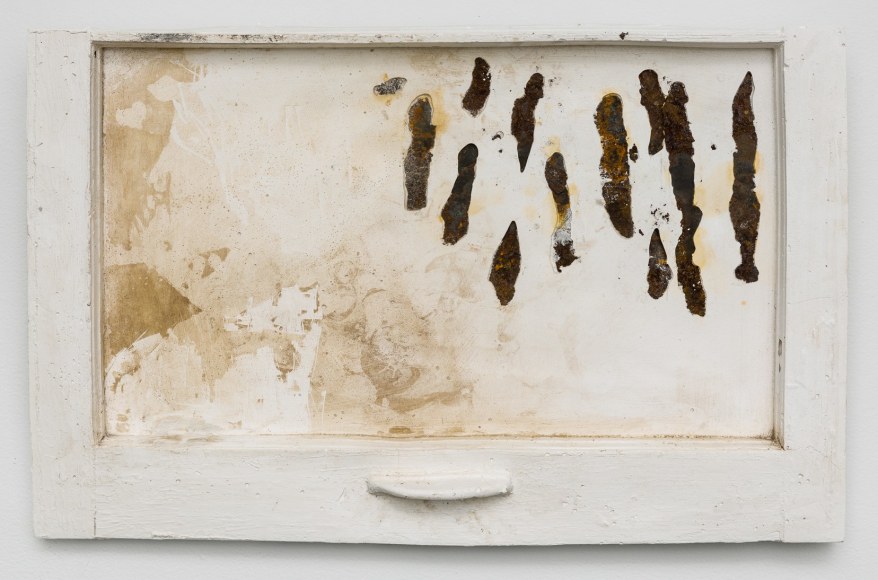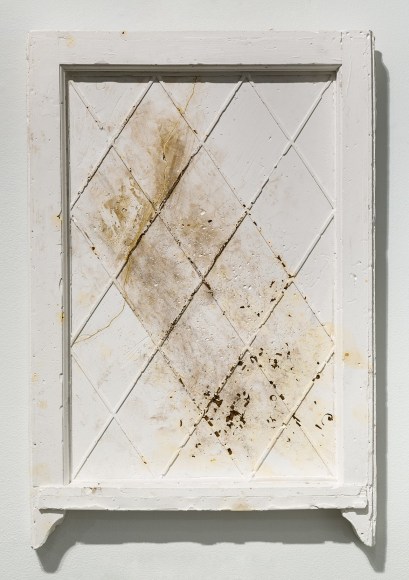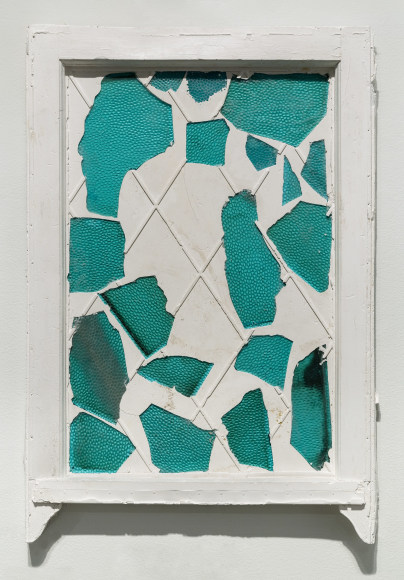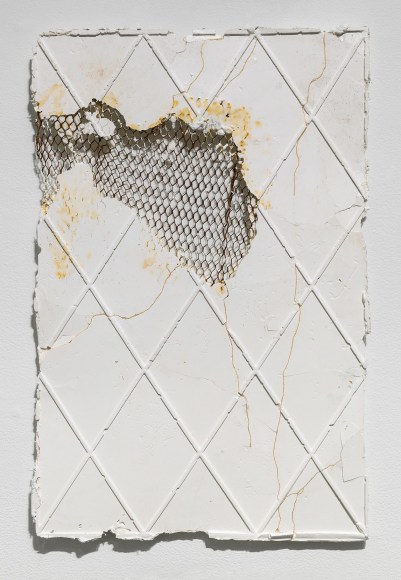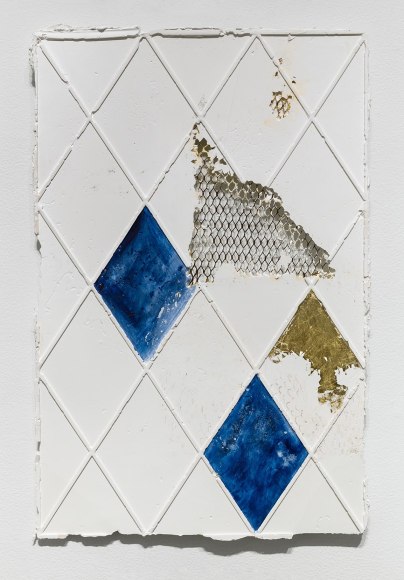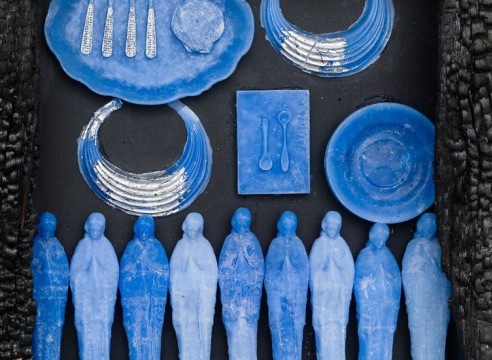
Asya Geisberg Gallery is proud to present "Reliquary", the fourth solo exhibition of Julie Schenkelberg. "Reliquary" begins with familiar themes of American decay, and the accompanying loss of status and class embodied within domestic objects and architecture. The artist, born in Cleveland and currently living in Detroit, hones her trademark locally sourced raw materials into a more crystalline vision. The central floor installation, the eponymous "Reliquary", suggests a sarcophagus of the future, where artifacts that might ordinarily lay inside the tomb are arranged rhythmically on the exterior, while the interior holds creamy wax casts of dishes, books, and a Virgin Mary altered into the artist's shape. Casts of Schenkelberg's family cutlery, covered in silver gilt, simultaneously suggest contemporary cuneiform and Modernism's stacking and repetition. The orderly exterior belies the rust and broken shards inside - the messy reality of striving for perfections, the hair's breadth between elegance and wealth and crumbling disarray and abandon. Travelling through time, "Reliquary" could be the artist's own repository of relics found in the future or a regurgitated panoply of generations' collections, functioning as reminders of a forgotten glorious past.
While Schenkelberg usually works in towering site-specific installations, the sarcophagus shifts to the body's scale, and tethers the exhibition to the ground. In another departure, wall works include opaque casts of windows embedded and impressed with materials directly sourced from Detroit. Famous for its legions of abandoned industries, burned neighborhoods, and decades of overgrown debris, the city is the perfect reservoir of materials for Schenkelberg. Wood and mattress springs from houses destroyed by arson, glass chunks from abandoned auto factories that suggest ice floes, rusted metal from manufacturing plants, all harmonize in minimal compositions. Reverential and restrained, the windows isolate and focus on fragments of abandon and disuse, and embellish the pristine white with gold thread and gilt.
With new-found ancient references, Schenkelberg elevates and canonizes the ordinary objects that mark our lives, and in turn Detroit's destruction and rebirth assume grander historic antecedents, just as the artist's re-cast and altered family heirlooms strive to transcend not just death and burial, but meaninglessness. Craving a spiritual or ritualistic connection, the artist assigns a richness to our world that may not actually exist, and grinds pasts a eulogy into a sermon of hope and revelation.

